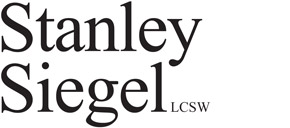During the mid- 1990âs I served as Dance Editor for Showbusiness and wrote weekly dance reviews and reported on the dance scene in New York City
Erick Hawkins
By Stanley R. Siegel
âNew Moonâ (1989), âCantilever IIâ (1988), âIntensities of Space and Windâ (Premiere)
Eric Hawkins aims to enlighten with his dance, rather than entertain. Blending mythical and spiritual themes with fluid, poetic and effortless movement, Hawkinsâ choreography mesmerizes. We experience his dances, like meditations, without reference to conflict or struggle. They absorb us in their serenity and astonish us with their innocence, grace and sensuousness.
The opening moments of New Moon establish the metaphor: The choreography suggests the moonâs steady passage across the night sky, Hawkinsâ âregenerative vision of life.â Set to a lyrical commissioned score by Louis Harrison and inspired by medieval poetry and a line from a poem by e.e. Cummings, the choreography shows the mysterious qualities of the new moon through a continuum of variations. It often works against the rhythmic structure of the score, rather than following along.
Three women enter spinning, one following another, their flowing movements and billowing harem-style costumes suggestive of the moonâs luminescence; their soft gestures, and rounded shapes, embodying the growing fullness of its image. The next tow solos, and then a third, the danceâs centerpiece, filled with buoyant movement, quick turns, soft jumps and falls, mirror the activity of the moonâs daily rise and descent. A final group movement, strangely meditative and joyful, uses the relationship between dancers to describe the harmony of the moon and the tide. The pure poetry, lightness and joy of the composition, with its images of the returning new moon, evokes a sense of resolution and renewal.
The most striking facet of Cantilever II, is its dynamic relationship with the score. Lucia Dlugoszewski, originally composed this vibrant piano concerto, with chamber orchestra, partitioned by four âattention spans,â in 1963 for Cantilever. The orchestraâs mixture of traditional and nontraditional instruments Buy Ativan makes the music explode with such intensity, that it commands equal attention with Hawkinsâ new choreography. The dace never visually interprets the music. Instead, in tune with Hawkinsâ easter aesthetic, the choreography opposes it, though like yin and yang, they become one.
Groups gently divide, flow together and redivide against excited bursts of sounds. Like voices of a canon, different dancers repeat the same steps, overlapping in time. Visual patterns ceaselessly change; at one moment, forming symmetrical shapes, at another, rhythmic lines. Hawkins punctuates the choreography with many brief duets, trios and random solos, each with a varied range of poetic movements. With angled jumps, dancers soar like cantilevers throughout the piece. Just as one jumper crosses our view, an exuberant musical phrase divides our attention.
Intensities of Space, and Wind, like Cantilever II, surprises us in kind. In both compositions, the unexpected emerges, not from the specific language of the dances, but from the interplay between the choreography and score.
In Intensities of Space, and Wind, the mood is more meditative, the movement strikingly simple. Set against a commissioned score by Katshuisa Hattori and Meisho Tosha, the composition opens with an empty stage, except for three black hyphen-shaped sculptures, framed like a Tori gate, in the background. Dancers costumed in black tank tops quickly fill the space. Hawkins opens and closes spaces, redesigning patterns with the swiftness of the changing mind.
Despite group images and tableaux, no single choreographic idea remains in focus long enough to develop detail. A phrase rarely melts into another, instead Hawkins creates empty phrases, momentary breaks in movement or space that remind us, as the program note suggests, that âemptiness is the source of all creative energy.â
Hawkinsâ dances, deeply sensuous and naturally fluid, tend to be more metaphysical than psychological. They surprise, calm, and refresh, moving us closer towards feelings of completeness. In Hawkinsâ world, harmony reigns and essence means more than image.




